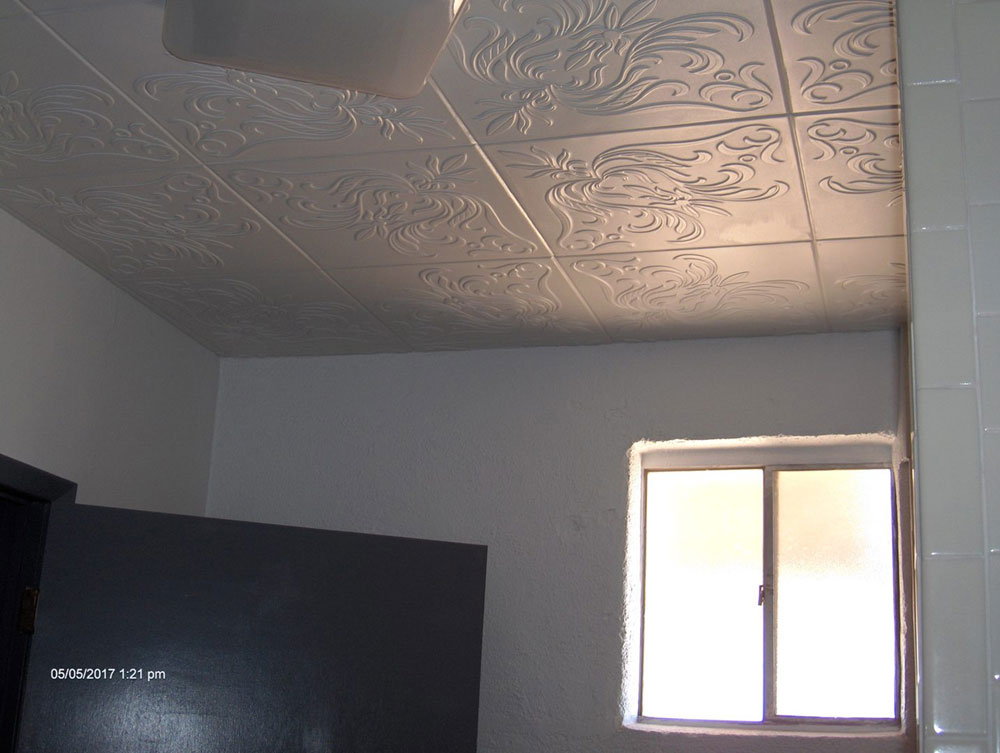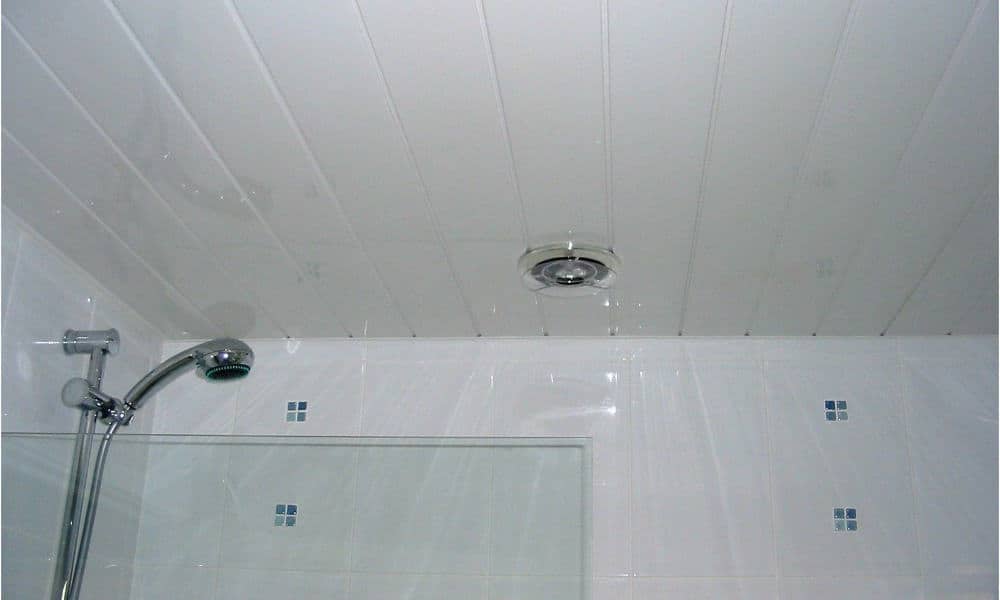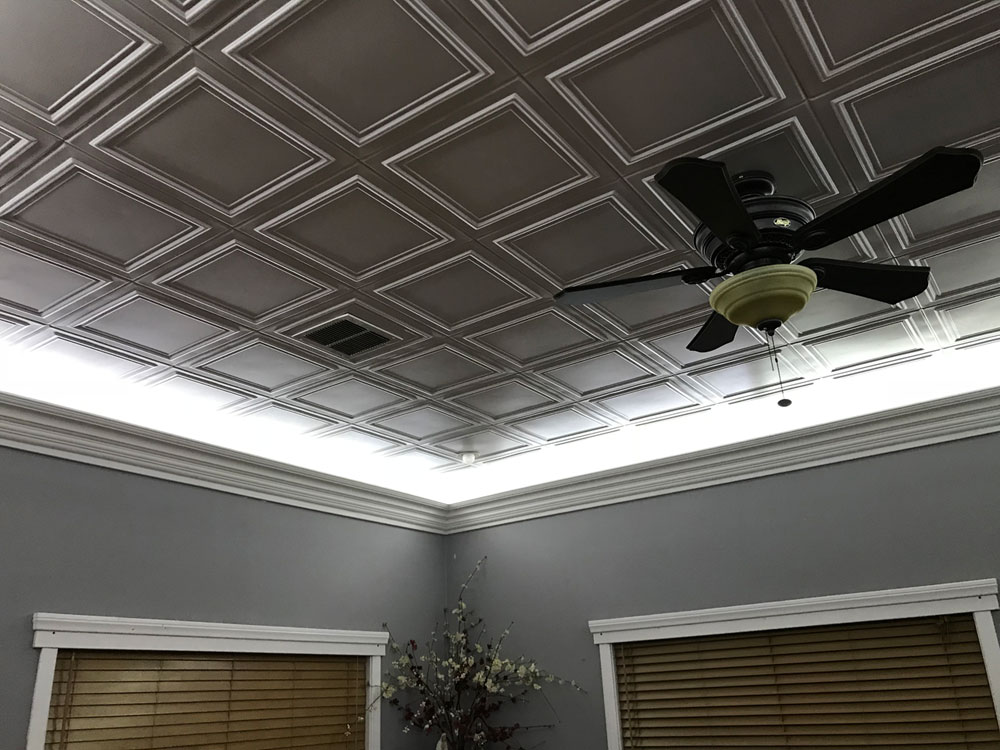Bathroom Ceiling Materials

Choosing the right bathroom ceiling material is crucial, as it needs to withstand moisture, look good, and last a long time. This is no small feat, especially when you consider the various options available. Let’s take a closer look at some popular bathroom ceiling materials and their pros and cons.
Drywall
Drywall, the ubiquitous wall and ceiling material, is a popular choice for bathrooms. It’s affordable, easy to work with, and can be painted to match any décor. However, drywall is not the most moisture-resistant material, and it can be prone to water damage if exposed to excessive humidity.
Drywall Pros and Cons
- Pros: Affordable, easy to install, paintable, versatile.
- Cons: Not very moisture-resistant, can be damaged by water, susceptible to mold growth.
Plaster, What is best for bathroom ceiling
Plaster is a traditional ceiling material that offers a smooth, elegant finish. It’s known for its durability and moisture resistance, making it a good choice for bathrooms. However, plaster can be more expensive and time-consuming to install than drywall.
Plaster Pros and Cons
- Pros: Durable, moisture-resistant, elegant finish.
- Cons: Expensive, time-consuming to install, requires skilled labor.
PVC Panels
PVC panels are a modern, moisture-resistant option for bathroom ceilings. They’re lightweight, easy to install, and come in a variety of colors and styles. PVC panels are also resistant to mold and mildew, making them a good choice for humid environments.
PVC Panels Pros and Cons
- Pros: Moisture-resistant, lightweight, easy to install, comes in various colors and styles, resistant to mold and mildew.
- Cons: Can be less aesthetically pleasing than other materials, may not be as durable as other materials.
Tile
Tile is a luxurious and durable option for bathroom ceilings. It’s highly moisture-resistant and can be cleaned easily. Tile comes in a wide range of colors, patterns, and styles, allowing you to create a unique and stylish look. However, tile can be expensive and time-consuming to install.
Tile Pros and Cons
- Pros: Highly moisture-resistant, durable, easy to clean, wide variety of styles and colors.
- Cons: Expensive, time-consuming to install, can be heavy.
Bathroom Ceiling Design Considerations

Okay, so you’ve picked your bathroom ceiling material, but now it’s time to get creative! Designing your bathroom ceiling is like choosing the perfect outfit for your bathroom – it can make or break the whole look.
Ventilation and Moisture Control
The bathroom is a humid environment, so your ceiling design needs to be a superhero when it comes to moisture control. Think of it like this: your ceiling is the first line of defense against the enemy, water vapor. Poor ventilation can lead to mold, mildew, and even structural damage, so it’s crucial to have adequate ventilation.
Here are some design considerations:
- Exhaust fans: These are your bathroom’s personal air conditioning units, pulling out that steamy air and keeping things fresh. A good exhaust fan should be powerful enough to remove moisture quickly.
- Ceiling vents: These allow air to circulate, preventing moisture from building up. Think of them as tiny windows for your ceiling, allowing fresh air to flow in and stale air to escape.
- Moisture-resistant materials: Choosing materials like drywall that are designed to handle moisture is essential. It’s like giving your ceiling a special waterproof coat!
Ceiling Design and Overall Look
Now, let’s talk about how different ceiling designs can impact the feel of your bathroom. It’s like choosing the right background music for your bathroom – it sets the mood!
- Vaulted ceilings: These create a sense of spaciousness and grandeur. Think of them as a big, beautiful cathedral ceiling for your bathroom, making it feel more luxurious and open.
- Tray ceilings: These add a touch of elegance and sophistication. Imagine a tray ceiling as a fancy crown for your bathroom, making it feel more refined and stylish.
- Recessed lighting: This creates a modern and clean look. Think of recessed lighting as strategically placed spotlights that highlight your bathroom’s best features, adding a touch of drama and elegance.
Bathroom Ceiling Installation and Maintenance: What Is Best For Bathroom Ceiling

Installing a bathroom ceiling is a relatively straightforward process, but it’s important to choose the right materials and follow the proper steps to ensure a durable and watertight finish. This section will delve into the intricacies of installing different bathroom ceiling materials, the importance of proper sealing and waterproofing, and practical tips for maintaining your bathroom ceiling, including cleaning and repair procedures.
Installing Bathroom Ceiling Materials
The installation process for bathroom ceilings varies depending on the material chosen. Here’s a breakdown of the steps involved in installing common bathroom ceiling materials:
- Drywall: Drywall is a popular choice for bathroom ceilings due to its affordability and ease of installation. The process typically involves:
- Installing furring strips or joists to create a level surface for the drywall.
- Attaching the drywall sheets to the furring strips using screws or nails.
- Applying joint compound to the seams and screw holes for a smooth finish.
- Sanding the joint compound to create a seamless surface.
- Priming and painting the drywall to complete the installation.
- Tile: Tile ceilings are a durable and stylish option for bathrooms, but they require more specialized installation techniques. The steps involved typically include:
- Installing a waterproof substrate, such as a cement board or a moisture-resistant drywall, to the ceiling joists.
- Applying a thin-set mortar to the substrate.
- Laying the tile on the mortar, ensuring proper spacing and alignment.
- Grouting the tile seams to complete the installation.
- PVC Panels: PVC panels are lightweight and water-resistant, making them a suitable choice for bathroom ceilings. The installation process involves:
- Attaching a grid system to the ceiling joists.
- Snapping the PVC panels into the grid system.
- Applying sealant to the seams and edges of the panels to ensure a watertight seal.
Sealing and Waterproofing
Proper sealing and waterproofing are crucial for preventing water damage in your bathroom ceiling. The following techniques are essential for creating a watertight barrier:
- Applying a Waterproof Membrane: A waterproof membrane, such as a rubberized sheet or a liquid-applied sealant, should be installed over the ceiling joists before installing the ceiling material. This creates a barrier to prevent water from penetrating the ceiling.
- Sealing All Joints and Seams: All joints and seams between the ceiling material and the walls, as well as around fixtures, should be sealed with a waterproof sealant. This prevents water from seeping into the ceiling cavity.
- Using Moisture-Resistant Materials: When choosing materials for your bathroom ceiling, opt for moisture-resistant options like PVC panels, moisture-resistant drywall, or tile. These materials are designed to withstand the humid environment of a bathroom.
Maintaining Your Bathroom Ceiling
Regular maintenance is essential for keeping your bathroom ceiling in good condition. Here are some tips for cleaning and repairing your bathroom ceiling:
- Cleaning:
- Dust or wipe down the ceiling regularly with a damp cloth to remove dirt and grime.
- For tougher stains, use a mild cleaner specifically designed for bathroom surfaces.
- Avoid using harsh chemicals or abrasive cleaners, as they can damage the ceiling material.
- Repairing:
- For minor cracks or holes, use a patching compound designed for drywall or tile.
- For larger holes or damage, you may need to replace the affected section of the ceiling.
- If you notice any signs of water damage, such as discoloration or warping, it’s important to address the issue immediately to prevent further damage.
What is best for bathroom ceiling – Okay, so like, what’s the best for a bathroom ceiling? I’m thinking of going with something waterproof, but also stylish, ya know? And then, like, you need a killer vanity to match! Check out this list of best bathroom vanities 2018 , they’re totally bomb! Anyways, back to the ceiling, maybe I’ll go with some cool tile or something.
Gotta make sure it’s low maintenance, though, cuz I’m not about that life. lol.
Yo, if you’re going for a chill vibe in your bathroom, a white ceiling is always a good move. It makes the space feel bigger and brighter, and it’s like, the ultimate blank canvas for your decor. But if you want to add some personality, you could totally go with a light gray ceiling.
It’s super trendy right now and would look amazing with a pop of color on the walls. Check out this article for some killer ideas on best accent color for gray bathroom. Then, once you’ve got the walls figured out, you can totally rock a gray ceiling!